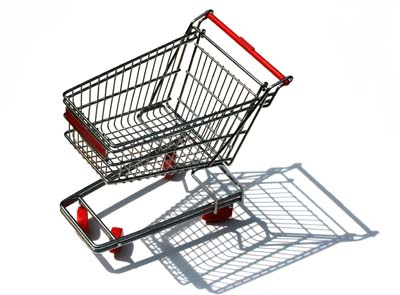E-commerce may be taking the world by storm, but South Africans remain wary of shopping online, with only 3-million making regular use of electronic shopping trollies to meet their daily requirements – but that could be changing.
With online purchases expected to near R10-billion in 2016, indications are that changing socio-economic factors will increase the use of digital shopping as technology becomes more accessible.
According to Vuyo Mpako, head of digital channels and e-commerce at Standard Bank, two of the major problems facing South Africans are limited access to the internet and the cost of broadband.
Mpako adds that, although uncapped access to fibre networks is increasing in homes across the country, the cost – usually more than R600 a month – restricts access to those in higher-income brackets.
“As making homeowners’ access to fibre a viable economic proposition relies on high consumer take-up numbers, suppliers naturally target major urban areas. Thus, it is the cities and higher-income neighbourhoods that receive services. For e-commerce to become popular beyond city limits, the traditional barriers of large distances and poor infrastructure have to be overcome.”
Factors impacting on e-commerce sales locally include:
* A lack of trust in making online transactions;
* The belief that internet purchases can only be made if the shopper has a credit card;
* The internet may not be cheaper than local retail outlets; and
* Local buyers tending to buy non-food items only, such as music, videos, gifts, clothing and software online.
“The true potential of e-commerce in South Africa can be seen from the fact that, although there are only about three million people using facilities regularly, the value of purchases made annually is increasing steadily,” Mpako adds. “World Wide Worx indicates that a milestone of 1,03% of total retail sales of nearly R10-billion will be expected to be made online in 2016.
“Increasing use of e-shopping will be made by young South Africans who have high levels of computer literacy and are comfortable with using applications, or apps, that make access to services easier.
“Presently, this sector, comprising people between the ages of 25 and 35, makes up the bulk of e-commerce users. Not surprisingly, young South Africans between the ages of 25 and 34 make up the bulk of e-shoppers, followed by those between 35 and 44 – about 16% of the total.”
As predicted by experts, adds Mpako, the increasing market penetration of smartphones is set to add further impetus to the use of e-shopping channels.
“While South Africa’s internet penetration lies at 34%, mobile phone penetration lies at 86%, according to World Wide Work numbers, and probably more than 50% of the adult population. As these mobile devices become more sophisticated, they bring easier access to streams of information and opportunities.
“Every facet of life is impacted by smart technology. Phones are used for everything from banking transactions to monitoring fitness levels and ordering groceries. It is inevitable that with the high penetration of smartphones in the market, more South Africans will be drawn to use their phone’s offerings.
“There is no doubt that as more services converge on smartphones, adoption levels will increase. Local consumers may at present be slow to adopt the technology, but more will see the value e-commerce offers. As this occurs, more people will come to trust the medium, realising the time saving benefit and potential for the medium to add real value to their lives. This will boost e-commerce and see larger numbers of South Africans moving into a digital shopping environment.”

